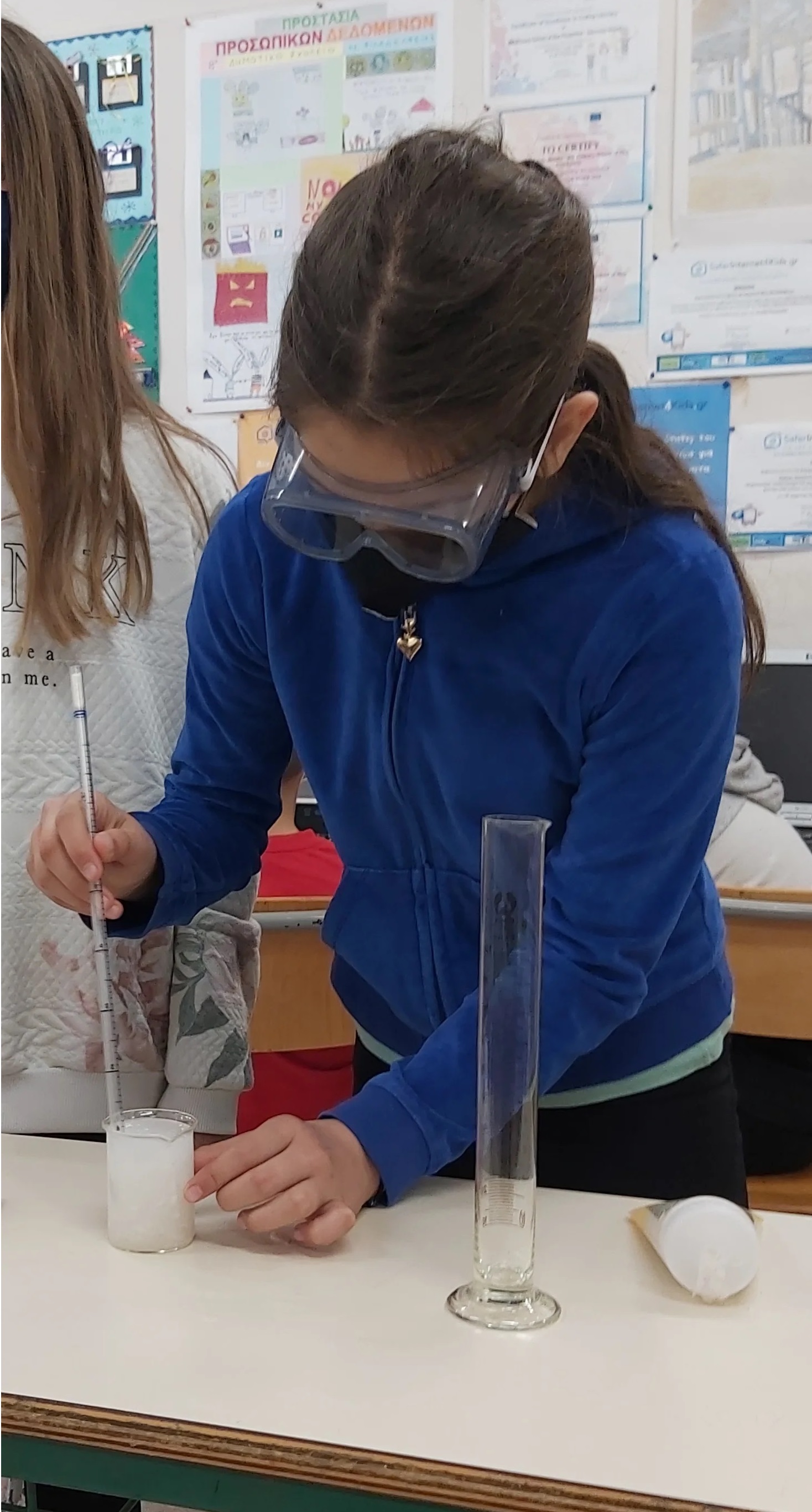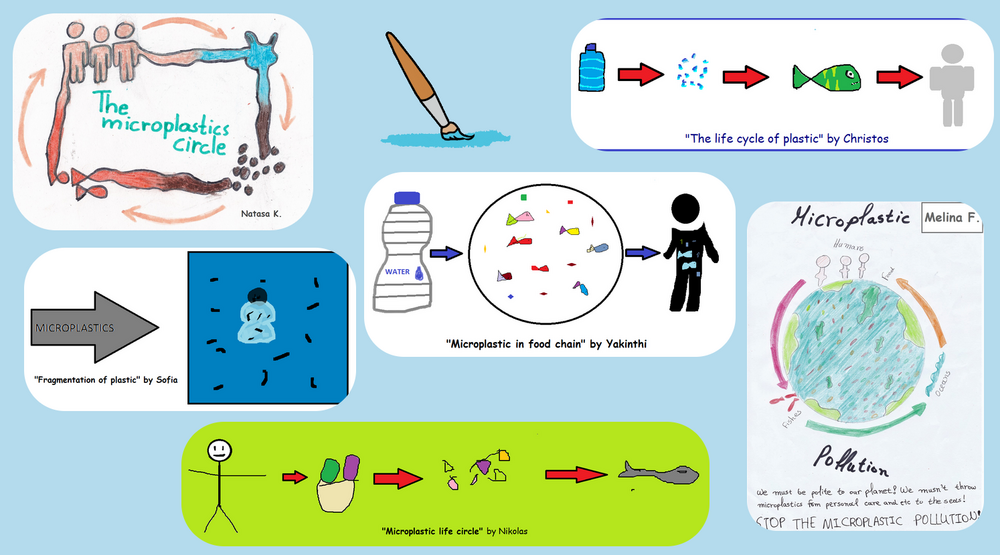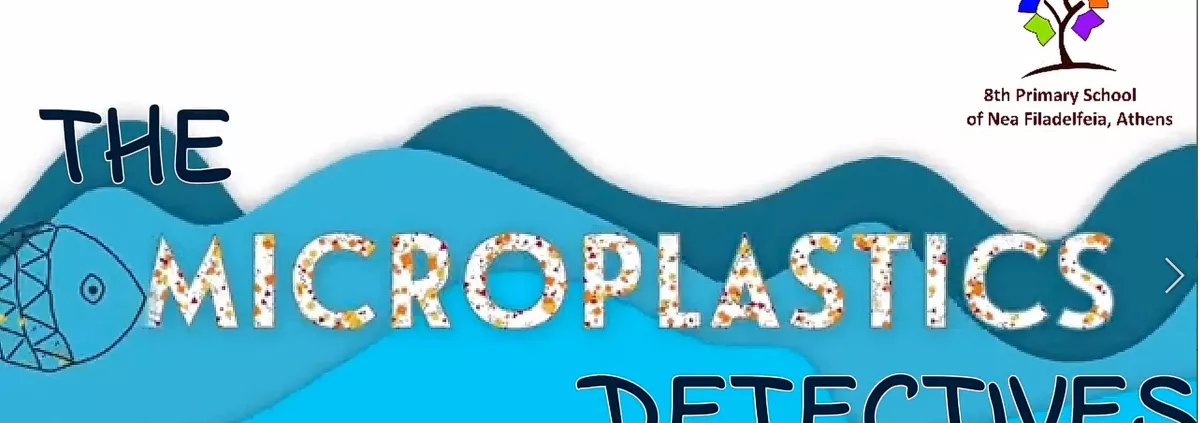Introduction:
The students at the 8th Primary School of Nea Filadelfeia implemented the interdisciplinary project of the STEAM methodology, "The microplastics detectives". Four disciplines of STEAM methodology were included (Science, Technology, Art, and Mathematics) and the collaborative and inquiry-based learning educational approaches were followed. The teachers that participated in this project (the ICT teacher, Ms Stavroula Skiada, and the headmaster of the school, Mr Ioannis Makris) played the critical role of the facilitators providing the necessary scaffolding and teaching of skills when necessary. Specifically, the project aimed to raise awareness of the adverse effects of the widespread presence of microplastics in the oceans and in the food chain. The students gained a basic understanding of the plastic life cycle, the fragmentation of plastic to microplastics, and the variety of sources that plastic particles can be originated from. Moreover, they became citizen scientists by participating in a meaningful scientific research about microplastics (microbeads) in cosmetic products. In addition, they did experiments to discover hidden microplastics not only in the chemistry lab but also as an outdoor activity to a nearby lake. This active learning and experimentation in the outdoors took place to boost motivation, physical skills, and the ability of students to work cooperatively in the nature.
The stages of implementation:
In the beginning of the project, the students were introduced to the notions of plastic, plastic waste and plastic soup using the interactive lessons of Life Terra – “Terra Mission Waste” and “Terra Mission Water” and the interactive  video “The story of plastic“.
video “The story of plastic“.
At the second phase of the project, the students acquired new knowledge about the microplastics and their categories. Firstly, they studied the vocabulary of “microplastics” from Julie Peller’s article (Futurum) and her interview about chemistry. Thus, the students learned how to talk like a chemist, how a plastic is fragmented to microplastics and how a research is conducted. Secondly, in groups, they searched the web to find information about the hidden microplastics in everyday life, the categories of them (microbeads, microfibres, nurdles, foam, and fragments) and their harmful effects in people’s health. Further, the teams created a digital wall (padlet) and “hung” on it all the images and their browsing-related information.
Following this, they installed the citizen science app “Beat the microbead” to the ICT lab’s mobile devices and, in groups, they scanned the ingredients on packaging of school’s cleaning  products using the app and recorded the microbead findings to the team’s class worksheet.
products using the app and recorded the microbead findings to the team’s class worksheet.
Subsequently, at the chemistry lab of the school, the “Discover the microbeads” experiment took place by the girl students to excite and empower them with knowledge and confidence in STEM. For this purpose, the young girl scientists calculated  the mass of microplastics (gr) in a certain volume of water mixed with the cosmetic product. In the next step, they calculated the mass of microplastics (gr) a person generates in a year while using the specific product. Finally, they calculated the percentage of microplastic in the whole mass of the product.
the mass of microplastics (gr) in a certain volume of water mixed with the cosmetic product. In the next step, they calculated the mass of microplastics (gr) a person generates in a year while using the specific product. Finally, they calculated the percentage of microplastic in the whole mass of the product.
At the final phase, during an outdoor activity, the students visited the artificial lake of Nea Filadelfeia’s park. The little scientists repeated the  experiment using the lake’s water. At the beginning, with the chemistry lab’s equipment, they collected an amount of water (ml) from the lake and filtered it through cotton pads. In the aftermath, the mass of microplastics (gr) found into the water was calculated and the measurements were recorded to the experiment’s worksheet. At the same time, another group of students collected the plastic waste around the lake, and also weighed the mass of it. As a result, the data gathered were used for the calculation of the total mass of plastic around and in the lake. Most importantly, the students recycled the plastic waste to the appropriate bins.
experiment using the lake’s water. At the beginning, with the chemistry lab’s equipment, they collected an amount of water (ml) from the lake and filtered it through cotton pads. In the aftermath, the mass of microplastics (gr) found into the water was calculated and the measurements were recorded to the experiment’s worksheet. At the same time, another group of students collected the plastic waste around the lake, and also weighed the mass of it. As a result, the data gathered were used for the calculation of the total mass of plastic around and in the lake. Most importantly, the students recycled the plastic waste to the appropriate bins.
Art for dissemination:
The final part of the project consisted of creating infographics and designing. In other words, using web 2.0 tools, the students visualized their proposals for a plastic-free life with engaging imagery and information data. They also painted, by hand or digitally, the life cycle of microplastics in the food chain. The creations of the students were used to decorate the school’s classrooms and corridors as a means of raising awareness to the school community.

Furthermore, a video with all the sequential activities was made as well and was communicated through social media, school’s website, and e-magazine.
The project’s activities: https://vimeo.com/703460056 .


Ευχαριστούμε πολύ!